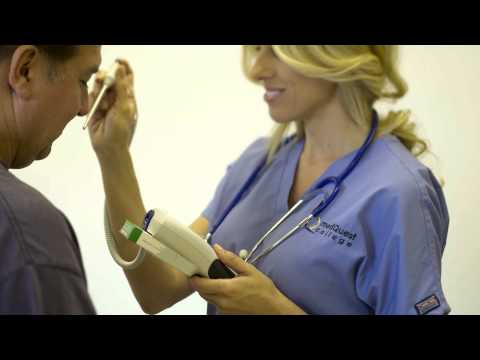What Can You Do With a Medical Assistant Degree?
Contents
- Job Prospects for Medical Assistants
- Duties of a Medical Assistant
- Training and Education Needed to Become a Medical Assistant
- Salary Expectations for Medical Assistants
- Career Advancement Opportunities for Medical Assistants
- The Job Outlook for Medical Assistants
- What Employers are Looking for in a Medical Assistant
- How to Become a Medical Assistant
- The Benefits of Being a Medical Assistant
- What You Can Do With a Medical Assistant Degree
Medical assistants are one of the most versatile health care professionals in the workforce. With a medical assistant degree, you can work in a variety of settings, including doctor’s offices, clinics, hospitals, and even research laboratories.
Checkout this video:
Job Prospects for Medical Assistants
Medical assistants are in demand! According to the Bureau of Labor and Statistics, employment of Medical Assistants is projected to grow 23 percent from 2016 to 2026, much faster than the average for all occupations.1
A career as a medical assistant can be very rewarding. Medical assistants perform a variety of administrative and clinical tasks to keep the offices of physicians, podiatrists, chiropractors, and other health practitioners running smoothly. They are sometimes referred to as the “right hand” of a doctor or other healthcare professional.
The duties of medical assistants vary from office to office, but they generally include taking and recording patients’ vital signs and medical histories, preparing patients for examination, assisting with office procedures, handling correspondence, scheduling appointments, handling billing and insurance claims, processing laboratory specimens, and instructing patients about medication and diet. Some medical assistants also perform basic laboratory tests, dispose of infected materials, prepare patients for x-rays, take electrocardiograms (EKGs), remove sutures (stitches), change dressings on wounds, insert catheters into bladders under supervision from physicians or nurse practitioners on staff at their office or clinic.
Duties of a Medical Assistant
Most medical assistants have responsibilities in both the clinical and administrative areas of a medical office. Here are some common duties you may perform as a medical assistant
Clinical duties:
-Taking and recording patients’ vital signs, such as blood pressure and temperature
-Assisting with examinations, providing patient education and performing minor office procedures
-Drawing blood, collecting diagnostic specimens and performing basic lab tests
-Administering medications and injections under the supervision of a physician
-Scheduling appointments and maintaining patient records
-Arranging for hospital admissions and laboratory services
-Counseling patients on health and wellness topics
-Instructing patients on how to prepare for diagnostic tests
Administrative duties:
-Answering phones, greeting patients and handling general office correspondence
-Maintaining medical records billing and coding information for insurance purposes
-Ordering supplies, scheduling equipment maintenance
-Making travel arrangements for staff members
-Completing insurance forms
-Assisting with office accounting
Training and Education Needed to Become a Medical Assistant
Medical assistants perform a variety of both clinical and administrative tasks to support the work of physicians and other health professionals. They are a key part of the health care team, often working directly with patients.
Most medical assistants have at least a high school diploma, although some jobs may require postsecondary education, and most medical assistants complete a formal training program. Formal training programs for medical assistants typically last about 1 year and lead to a certificate or diploma. Some community colleges offer 2-year associate degree programs in medical assisting. A small number of 4-year colleges and universities offer bachelor’s degree programs in medical assisting, but these are not as common.
Salary Expectations for Medical Assistants
The median annual wage for medical assistants was $33,610 in May 2017. The median wage is the wage at which half the workers in an occupation earned more than that amount and half earned less. The lowest 10 percent earned less than $23,490, and the highest 10 percent earned more than $48,720.
In May 2017, the median annual wages for medical assistants in the top industries in which they worked were as follows:
Offices of physicians$33,770
General medical and surgical hospitals; state, local, and private32,870
Outpatient care centers32,140
Offices of other health practitioners30,560
Employment of medical assistants is projected to grow 29 percent from 2016 to 2026, much faster than the average for all occupations. The aging Baby Boomer population will need more medical services as they live longer and active lifestyles.
Career Advancement Opportunities for Medical Assistants
There are many avenues for career advancement open to medical assistants. With experience, medical assistants may assume more responsibility, such as managing an office or supervising other medical assistants. Some medical assistants become certified medical assistants, which requires passing an exam given by a professional organization, such as the American Association of Medical Assistants or the American Medical Technologists.
With additional education and training, medical assistants may become licensed practical nurses or registered nurses. Some certified medical assistants also pursue careers in other allied health professions, such as physical therapy or occupational therapy.
The Job Outlook for Medical Assistants
The job outlook for medical assistants is excellent. Employment of medical assistants is projected to grow 19 percent from 2019 to 2029, much faster than the average for all occupations.1 The aging baby-boom generation will need more medical care as they live longer and experience more health problems. An emphasis on preventive care, such as screenings and vaccinations, is also expected to increase demand for medical assistants. In addition, as physicians increasingly collaborate with other health care providers, such as nurse practitioners and physician assistants, they will require more support from medical assistants.
What Employers are Looking for in a Medical Assistant
More and more employers are requiring medical assistants to have formal training and certification. This is because the duties of a medical assistant are expanding and becoming more technical. As a result, employers are looking for candidates with not only the proper technical skills, but also the soft skills necessary to work well with patients and other members of the healthcare team.
Some of the specific skills employers are looking for in a medical assistant include:
-The ability to take accurate vital signs
-The ability to document patient history
-The ability to assist with examination and treatment
-The ability to perform basic laboratory testing
-The ability to give injections
-The ability to schedule appointments
-The ability to follow up with patients after their visits
-Basic computer skills
How to Become a Medical Assistant
Most medical assistants have at least a high school diploma, although some positions may require postsecondary education, and most medical assistants must complete a brief period of on-the-job training. Although not required, certification as a medical assistant demonstrates to potential employers that an individual has the knowledge and skills necessary to perform the job and can be helpful in securing employment.
The Benefits of Being a Medical Assistant
Medical assistants play a vital role in the healthcare industry. They are the glue that keeps doctor’s offices, clinics, and hospitals running smoothly. They are often the first point of contact between patients and the medical staff, and they play a key role in ensuring that patients receive the care they need.
Medical assistants perform a variety of administrative and clinical tasks. They may schedule appointments, take medical histories, record patients’ vital signs, prepare lab specimens, and give injections. They also answer questions from patients and provide them with information about treatments, medications, and test results.
Medical assistants must be able to multi-task and stay calm under pressure. They need to be able to work well with others and have excellent communication skills. They must also be detail-oriented and organized.
Most medical assistants have at least a high school diploma or equivalent; however, some employers may prefer candidates who have completed a formal medical assistant training program. Many community colleges offer medical assistant programs that can be completed in as little as one year.
Medical assistants are in high demand, and the job outlook is excellent. According to the U.S. Bureau of Labor Statistics, employment of medical assistants is expected to grow 23 percent from 2016 to 2026—much faster than the average for all occupations. The aging baby-boomer population will need more medical care as they live longer and demand more sophisticated procedures.
What You Can Do With a Medical Assistant Degree
A medical assistant degree can lead to a career in a variety of settings, including hospitals, clinics, physician’s offices, and other healthcare facilities. As a medical assistant, you will perform both administrative and clinical tasks to support the work of physicians and other medical professionals.
With a medical assistant degree, you will be prepared to take on a variety of roles within the healthcare industry. Your specific duties will vary depending on your employer and the state in which you work, but may include tasks such as scheduling appointments, taking medical histories, checking vital signs, giving injections, preparing patients for exams, and assisting with minor surgeries. In addition to clinical duties, you may also be responsible for handling insurance paperwork and coding medical charts.
The skills you learn as a medical assistant will give you the opportunity to pursue many different types of careers within the healthcare industry. With your degree in hand, you will be prepared to start a rewarding career working with patients and helping them to receive the quality care they need and deserve.







